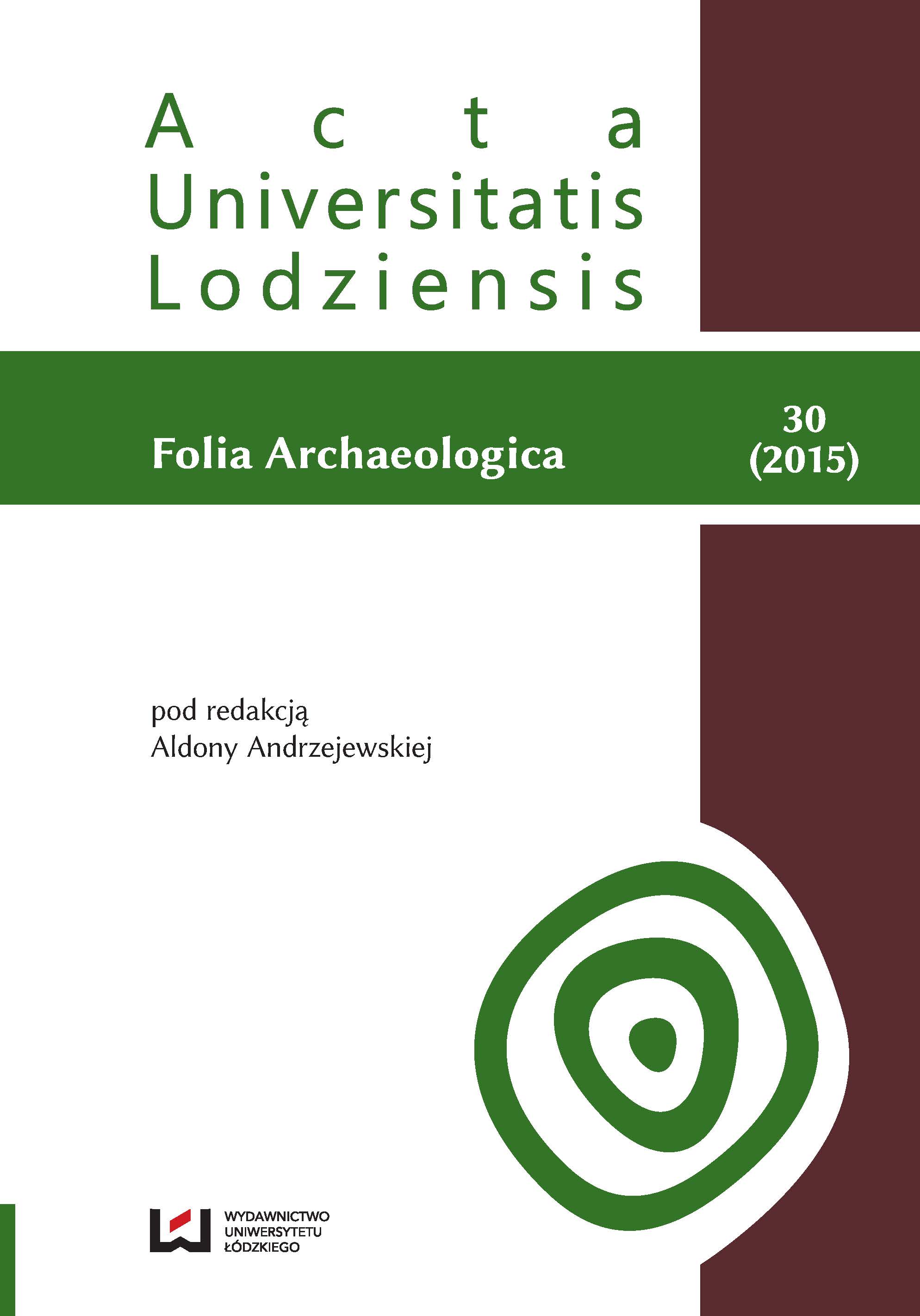Refleksje nad perspektywami zachowania stanowisk neolitycznych w dorzeczu Tążyny
Some reflections on the prospects of the Neolithic sites preservation in the Tążyna river basin
Author(s): Seweryn RzepeckiSubject(s): Archaeology, Ethnohistory, Ancient World
Published by: Wydawnictwo Uniwersytetu Łódzkiego
Keywords: Neolithic sites; Tążyna river basin; Kuyavia; preservation archaeological sites
Summary/Abstract: The Tążyna river is one of not large Kuyavian tributaries of the Vistula river. A unique feature of this river catchment area is a very high degree of biodiversity. It comprises, among others, the co-occurrence of zones of various lithology and genesis (morainic plains, valleys with outwash plain formations, outwash plains with holes) and relatively shallow occurrence of salt deposits supplying the groundwater with brine. They are accompanied by the occurrence of halophytes. The discussed region also abounds in numerous archaeological sources dated to the Neolithic. They document complicated processes of the Tążyna basin domestication. They were initiated by the appearance of agricultural societies of the Linear Pottery culture exploiting the environment of soils with the highest agricultural values. These groups also made an attempt of “tactical” use of podzols environments, however, due to its failure within the following centuries, they concentrated on earlier exploited areas. A real breakthrough was brought by the occurrence of the Funnel Beaker culture societies. They were mainly interested in less abundant, hitherto not used in terms of economy, environments. Probably at that time brine springs were also exploited. An excellent example of a settlement from this period is Wilkostowo 23/24 – one of the best recognized complexes of “funnel beakers” in Europe. In the following centuries the Tążyna basin was the scene of activeness of societies realising more mobile (“globular amphoras” and “corded ware”) economic strategies. The state of preservation and prospects of the Neolithic sites survival adversely correspond to the outstanding cognitive significance of the region under consideration. During the recent thirty – forty years a sharp increase of threats to part of them – especially to these located on the weakest soils (developed on sandy substratum) took place. Their areas are nowadays afforested, objects connected with vegetables storage are located on them, and they become purposes of minerals (sand, gravel) exploitation. In such a situation it is necessary to implement a local programme of protection of sites dated to the Neolithic. The author postulates that it should include verifying surface surveys, excavations and educational actions.
Journal: Acta Universitatis Lodziensis. Folia Archaeologica
- Issue Year: 2015
- Issue No: 30
- Page Range: 7-19
- Page Count: 13
- Language: Polish

